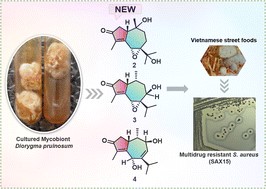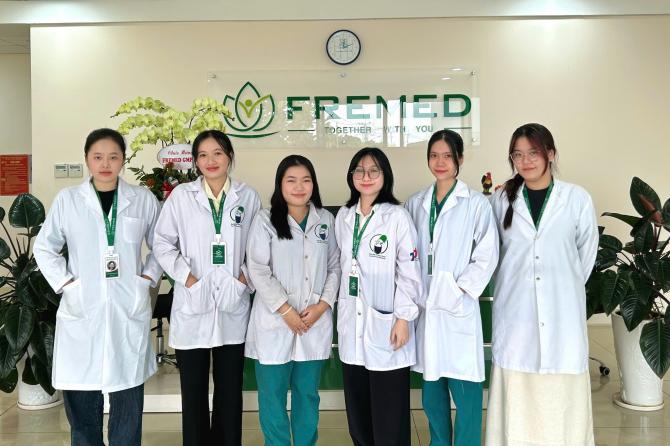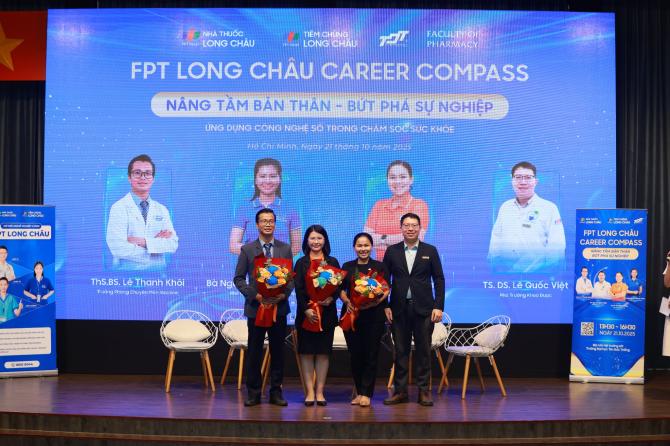Diorygma pruinosum Sesquiterpenes: Activity Against MRSA from Vietnamese Street Foods

Traditionally, lichen has been used for many purposes, but there remains a lack of understanding regarding the chemical composition and antimicrobial characteristics of Diorygma pruinosum, a lichen native to Vietnam. In this study, four sesquiterpenes, diorygmones B–E (1–4), one phenolic compound, 3,5-dihydroxy-4-methoxybenzoic acid (5), and one sterol, β-sitosterol (6), were isolated and structurally elucidated from the cultured mycobiont of the lichen Diorygma pruinosum. Additionally, two compounds, stictic acid (7) and norstictic acid (8), were also isolated from the lichen D. pruinosum. Compounds 2–4 were new compounds. Their chemical structures were established using comprehensive spectroscopic data, and the absolute configurations were confirmed through the analysis of NOESY and electronic circular dichroism (ECD). Moreover, Staphylococcus aureus, a Gram-positive bacterium, has been responsible for various infections, including food poisoning. Herein, we identified and isolated 13 strains of S. aureus from street food sources. Among these strains, one was identified as a multidrug-resistant variant, designated as SAX15, and was subsequently used for further antimicrobial testing. Compounds 1–3 produced zones of inhibition against S. aureus SAX15 (each 5 mm) in comparison to commercial drugs such as penicillin, ciprofloxacin, gentamicin, cefoxitin, and clarithromycin, which displayed inhibitory zones of 7, 5, 10, 9.7, and 7 mm, respectively.
The research was published in the journal RSC Advance (RSC Adv., 2024,14, 4871-4879) and is available at the following link: https://doi.org/10.1039/D3RA07112J.
The research was conducted with the participation of Dr. Nguyen Truong Huy, Head of the Faculty of Pharmacy at Ton Duc Thang University.






